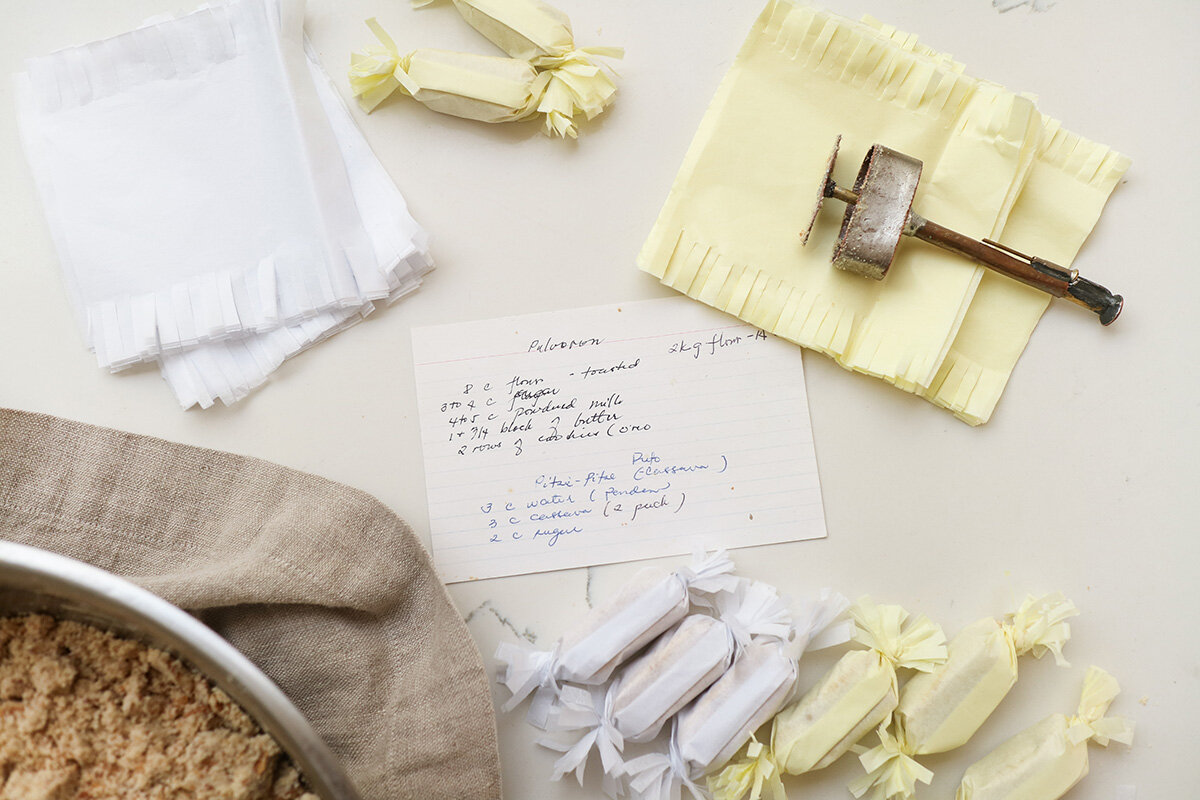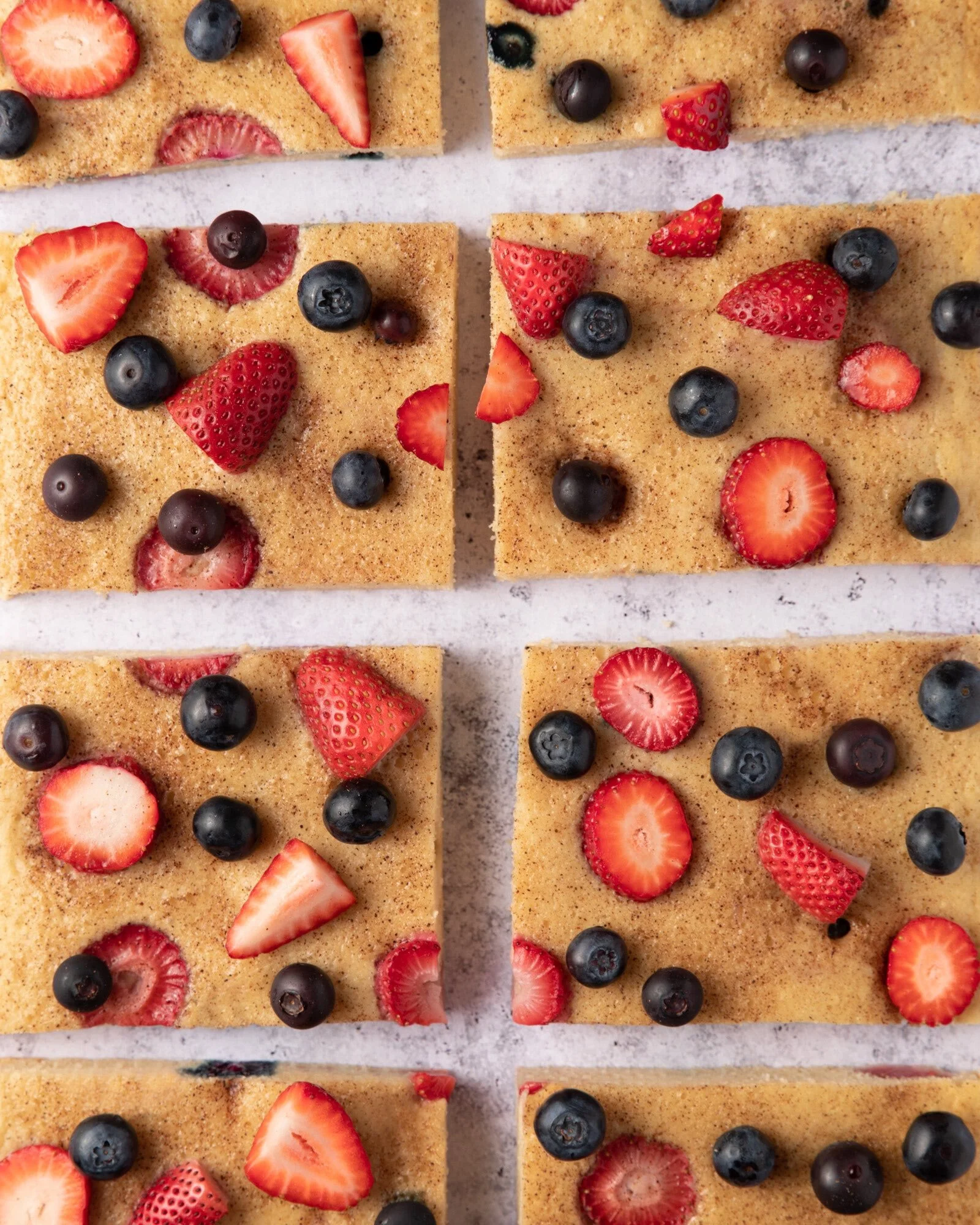#12 Grace Guinto – Melbourne, Australia
As a lover of south-east Asian cuisines, I’d never dipped my toes (teeth?) into Filipino flavours before. Thankfully, Grace Guinto – known for championing her Filipino heritage and specifically her mum’s recipes – led me through her knowledge of traditional ingredients and the family meals typically served to kids.
Grace has created a platform for women of colour in the hospitality industry and spotlighted Australian Filipina representation in Australia through her advocacy and catering business. She’s an excellent teacher for those of us who might be unaware of Filipino culture.
The collective she co-founded aims to introduce Filipino cuisine and culture to the hearts and minds of Australians in Wurundjeri country. The group believes that their unique flavours are under-represented in Australia, despite it being home to over 290,000 people of Filipino heritage. That's the fifth-largest group of Australians born overseas and the third-largest Asian group after Chinese and Indians.
Grace shares her insights on growing up as a “third culture kid” in Australia, and offers up a nostalgic recipe for a sweet treat, close to her heart.
Name: Grace Guinto
Occupation: Co-founder, The Entree.Pinays;
Chief Baking Officer, Sweet Cora
Location: Melbourne, Australia
Family members: Rodney and Grace, Julian (9yp), Avery (7yo), Stella (3yo)
My family unit is a mixed bag of cultures, which I colloquially refer to as my Aussie-Yankee-Doodle-Dandee family. I was born in the Philippines but grew up in Australia, while my husband was born and raised in New Jersey, United States, to Filipino parents. We both met in Los Angeles in 2005, arguably the most culturally diverse city in the US. We could travel the world through our taste buds, eating our way through the diverse neighbourhoods and eateries that LA had to offer.
Whilst I was born in the Philippines, my entire childhood was spent in Australia. I would classify myself to be a "third culture kid". One who was never Filipino enough for the elders, but not Australian enough to pass as an "Aussie". I think that has influenced the way I like to cook and bake today. My culinary creations are influenced by a childhood where I didn't entirely belong or fit in. The treats that I serve through my Sweet Cora catering business draws from this mixed bag of cultural references, one that specialises in Aussie and American bakes with a Filipino twist.
Following my mother's terminal cancer diagnosis in 2013, we relocated back to Melbourne with our toddler son. Whilst I've always been proud and connected to my Filipino heritage and identity, my mother's death at the end of 2013 was the catalyst for me forming a deeper connection to my Filipino roots. She made me love my Filipino heritage through the food she cooked. In recreating her recipes and serving this food to my children, I feed them memories of a Lola (grandma) whose legacy lives on through my cooking.
As a parent who has lost a parent, my cooking and the senses it invokes - the sight, the sound, the smells, the tastes - allows me to reconnect with my Mama, who I miss the most. While my Mama, and my kid's Lola (grandma), may no longer be physically here, her memory lives on in the handwritten recipes handed down to me, her three grandchildren, and her 3-year old granddaughter Stella Cora named in her memory. Every time I cook in the kitchen with my daughter now, it evokes the happiness and memories I shared with my mother. What was lost in her passing has now been resurrected in the new experiences I'm able to enjoy with my daughter in the kitchen.
One of the first things that Filipino kids are taught to do in the kitchen is to cook rice. Touch your hand to the bottom of the inside of the pot and use the first line on your middle finger to measure the water. Every Filipino swears it's the perfect way to cook rice, and it's a rite of passage that we teach our kids in a Filipino kitchen. Like many of our South-East Asian neighbours, rice is present at every meal. Whether almusal (breakfast), tanghali (lunch), merienda (in between snack), or hapunan (dinner). Example of dishes served to kids in Filipino households during these mealtimes include: Champorado (chocolate rice pudding), Lugaw (rice porridge) or steamed rice with ulam (main dish of meat, seafood or veggies).
Image Mark Jesalva
My father is my other great influence in the kitchen. Through my advocacy work with The Entree.Pinays and the establishment of my Sweet Cora catering business, both have become outlets for me to rediscover my parents' past to understand their culinary identity. While my Mama's youthful stint at the butcher shop meant that she enjoyed cooking all things pork in her Filipino cooking, my Papa's young fishing endeavours explains his love for all things seafood. Their relationship was the classic pairing of surf and turf. It was a marriage between the "boy who grew up by the Philippine provincial seas" and the "girl from the city".
The Entree.Pinays seek to use food as a gateway to understand and unpack the hurdles that women of colour have in sectors traditionally filled with our cis male counterparts. Whilst Australia is a developed nation, historically, many of the country's advances towards gender equality have excluded women of colour. Even in 2020, the concept of intersectional feminism is not widely understood or accepted. That is, the notion that true feminism should create space for female-identifying people of diverse backgrounds, including in male-dominated fields like the culinary arts, F&B and hospitality sectors. By creating a platform for women of colour, we hope to help shift this narrative, applying a western diaspora experience to Filipino culture and being the Australian Filipina representation that they never had growing up.
Like many cultures, Filipino food is anchored by the matriarchs who share the love of our cuisine, culture and communities through the magic they created in the kitchen. As a kid of migrant parents, we didn't necessarily get to eat dinners together during the week, as my parents worked blue-collared jobs that would have unusual shift work. My dad would be out of the house before we rose for breakfast, while my mum was often absent from the dinner table as she worked jobs that involved night shifts. As such, weekends were a special time for us to bond as our family. These were the only times when both my Mama and Papa would be home together at the same time, so we made it a point that for breakfast, lunch and dinner, we would come together around the mesa (table) to eat and truly be together.
Polvoron
The recipe I'm sharing is from a handwritten recipe card for my Mama's Polvoron. It's a type of shortbread popular in Spain and its former colonies in Latin America and the Philippines. Its name comes from the Spanish word polvo ("powder" or "dust"), and as it suggests, it's a soft, crumbly confection made of flour, milk, sugar, fat, and nuts.
I love this recipe because it invokes my childhood memories of making polvorons with my Mama. I would share this role with my younger sister, moulding the shortbread cookies with the handmade metal contraption (created by my Papa with his welding skills), or wrapping the cookies into tissue paper like a little gift. It would be a factory line of sweet goodness, with so much chatter, love and laughter shared between our Mama and her daughters. This is now a memory I love recreating with my daughter.
8 cups of plain flour, toasted
3 1/2 cups of sugar
4 1/2 cups of powdered milk
440 gms of butter, melted
Optional extras: For 'pinipig' (toasted flattened rice flakes) flavour - add 1 cup pinipig. For a nutty flavour - add 1 cup of roasted unsalted cashew or peanuts. For a cookies & cream flavour - add 12 crushed up Oreo cookies.
In a skillet over medium heat, add flour. Toast, stirring regularly, until lightly browned and aromatic. Remove from heat and allow to cool.
In a bowl, whisk together toasted flour, powdered milk, and sugar until well-combined. Add butter and continue to stir until well-combined.
In a bowl, whisk together toasted flour, powdered milk, and sugar until well-combined. Add butter and continue to stir until well-combined
Transfer mixture into a flat baking dish and using a polvoron mould, shape into solid cookies. Make sure mould is as compact as possible.
Wrap individually in tissue paper.wrappers.
(Note: If you don't have a moulder, you can scoop the loose mixture into a jar and use a spoon to gobble up when you need a sweet fix and hint of Filipino childhood nostalgia).
Images by Maysie Lecciones.












